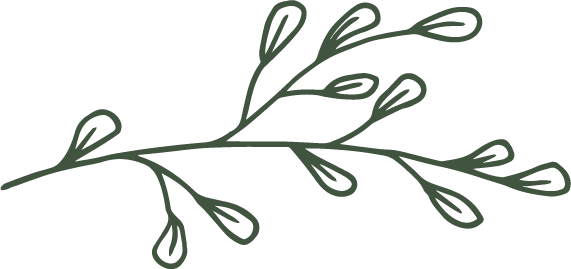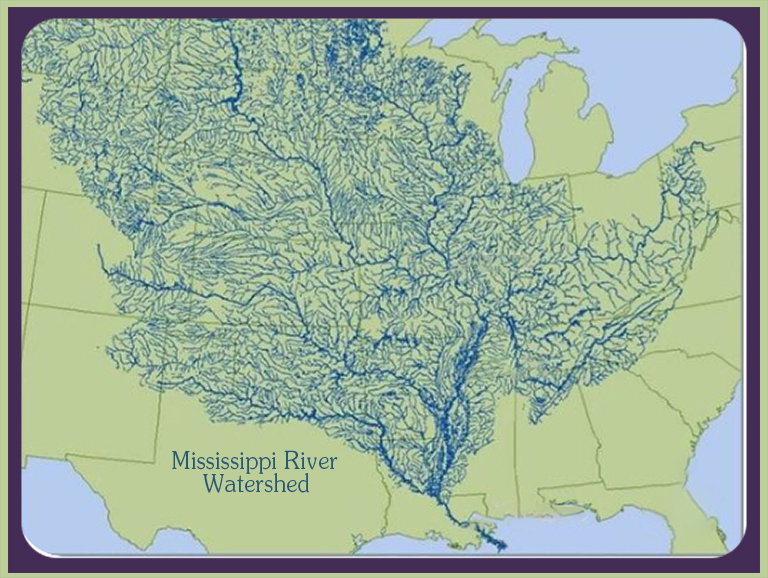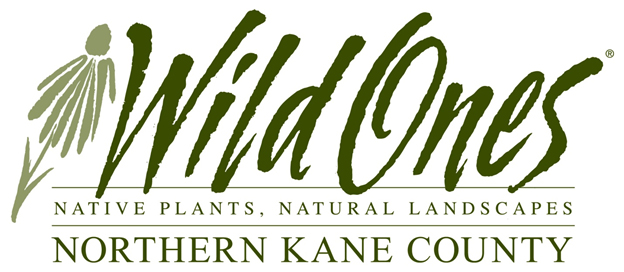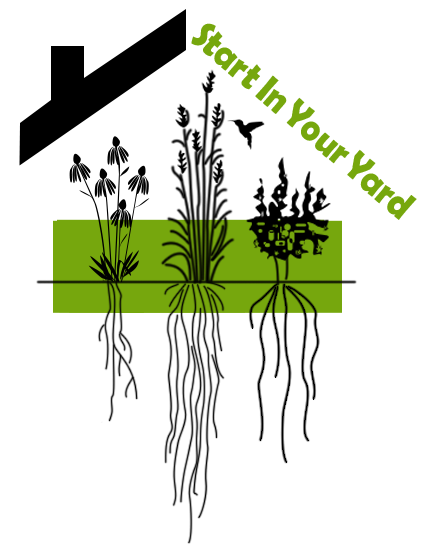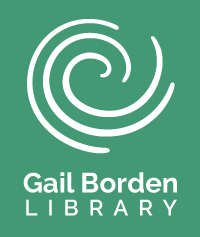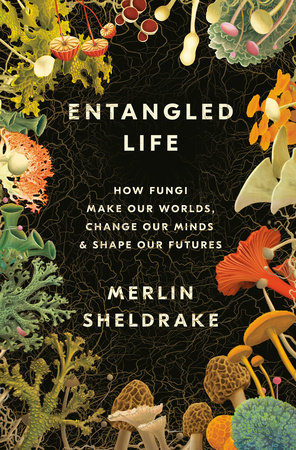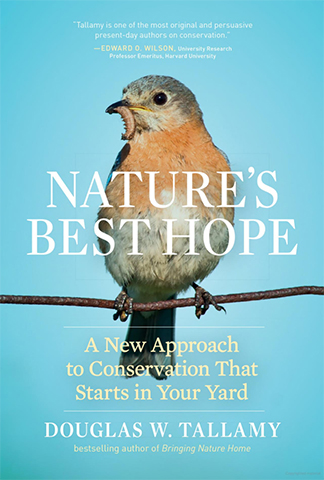Our 2024 Community Read
January February March
3rd Tuesdays at 7:00 p.m. on Zoom
Why a Community Read?
Because the rain falls on all our lands, mingles, and becomes part of our shared streams and rivers. This year, we are reading, not a book, but our topography. Which way is downhill? Which direction does our escaping rainwater run? What creek captures it and sends it along to the river?
Why focus on the watershed?
Just as all parts of our body share the bloodstream -- that essential, circulating flow -- our lands share waterways, which also circulate life-sustaining fluid -- water. Learning about watersheds can help us understand what to do on our own land to help take the pressure off the precious waterways who benefit us in ways we may not appreciate.
Why you?
Because you – and I – are part of Life, part of the natural world, even if we don’t think of ourselves that way. Learning about nature's circulatory system, and its essential role, helps us connect with Earth’s systems that sustain Life.
presentations
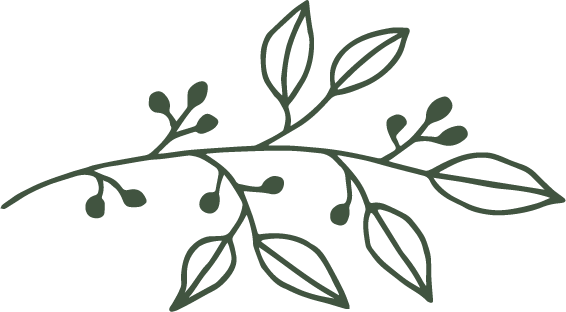
Learn what they are and why they're important. You'll discover that, behind the scenes, a great deal of work and planning go into caring for them -- by people like our presenter, Jennifer Hammer of The Conservation Foundation.
Meet our experts!
Jennifer Hammer
Jennifer is an ecologist at heart, usually carrying a pair of binoculars to look at birds, plants, dragonflies and all manner of herps with her husband Ed.
Holly Hudson
Holly most enjoys when she gets to work outdoors and learn about the region’s streams and lakes, help develop action plans for their protection and improvement, and share her passion with others toward working together to protect and improve our water resources and aquatic habitats.
Holly also serves on various local, state, and national committees including the Fox River Ecosystem Partnership, Tyler Creek Watershed Coalition, Kane County Farmland Protection Commission, Illinois Nutrient Loss Reduction Strategy - Urban Stormwater Working Group, and the North American Lake Management Society’s Lakes Appreciation Month/Secchi Dip-In Committee.
You can reach her at: hhudson@cmap.illinois.gov
Rob Linke
You can reach him at: linkerobert@kanecountyil.gov
Jessica Mino
After earning a Master’s Degree in Environmental Conservation from the University of Wisconsin – Madison, Jennifer worked for Kane County in the Division of Environmental and Water Resources. She then made the move to The Conservation Foundation.
Jessica is passionate about connecting people with the beauty and benefits of nature and encouraging people to care for our shared environment.
Jennifer lives in Woodstock with her husband, Kyle. They enjoy every chance to get outdoors: gardening, camping, hiking, scuba diving, fishing, and doing home renovations together.
Gary Swick
Under his direction, students planted over 50,000 trees, restored acres of natural areas, generated files of research, and accomplished many other acts of environmental stewardship that have become local history. Many of those students are now professionals in the environmental field.
He also invested 10 years at Northern Illinois University as an instructor, and 30 years with the Friends of the Fox River creating a watershed of caretakers and “Fixin’ the Fox.”
He is living in his fifth home with a yard converted to wildlife habitat. His grandparents had a victory garden, and he thinks all Americans should find patriotism again in utilizing their yards for food for their neighbors both human and wild.
Gary is currently the President of the Board at the Elgin Math & Science Academy.
You can reach him at: greenswick@gmail.com
Our Past 2023 Community Read
January & February 2023 March & April
Why a Community Read?
We share not only a community, but also a planet. This is an opportunity for our community to come together around a topic that has profound implications for this planet. These are ideas that can amaze, inspire and awaken us.
Why focus on soil?
There’s no better topic to stretch our imaginations, put humankind’s accomplishments into perspective, and introduce us to the hidden (from us) intelligence of nature. Soil is alive – despite our common misunderstandings.
Why you?
Because you – and I – are part of life, part of the natural world, even if we don’t think of ourselves that way. Learning about what’s going on beneath our feet can help us appreciate the living web we’re part of.
HANDOUT
Click here for a list of related films, books and articles.presentations

Meet our experts!
Carter O'Brien
One of his most meaningful and impactful projects was stewarding the transformation of the Field Museum's grounds from concrete and turfgrass lawns to the Rice Native Gardens, including the Museum's Edible Treasures staff community garden and establishing an iNaturalist project to highlight and document improvements to biodiversity at the Field and Museum Campus.
In the fall of 2022 he left for a new position at Chicago's Department of Streets and Sanitation, where he now focuses on policy and operations relating to recycling, composting, and other forms of waste diversion.
In 2008 he received Fair Trade Chicago’s first-ever Changemaker of the Year award, which recognized his efforts to make the Museum’s Corner Bakery restaurant the only one in America that served only Fair Trade and Rainforest Alliance certified coffee. A lifelong Chicagoan, he holds a BA in the Teaching of Social Studies from UIUC and a MS in Sustainable Management from the University of Wisconsin-Parkside, and is LEED AP O+M accredited. He is on the board of the Chicago Recycling Coalition, a Treekeeper, and loves cycling, kayaking, music and the martial arts.
Emma Leavens
conserve and restore our natural ecosystems.
She has a master's degree in plant biology and conservation from Northwestern University and an ever-expanding admiration for organisms and their interactions with each other.
Corey Begalka
After years of inside laboratory work, Corey left the corporate setting in favor of work that would take him closer to nature. Now Corey describes himself as a “forest comber” – one who assesses a natural area, identifies invasive plants encroaching upon natives, creates an inventory, develops a restorative plan, and removes the offending plants, shrubs, and/or trees.
He has been an independent plant seeker and seed collector for the Chicago Botanic Garden. He guides hikes (day or nighttime), focused on nature and plant identification, as well as what he terms, meditative, eco-theraputic walks.
Mark Bramstedt
Most of Mark's career as a soil scientist was spent with the U.S. Department of Agriculture in soil mapping, soil conservation, wetland identification, and other issues of natural resource management - working with private landowners, universities, and local, state, and federal government agencies to understand how soil responds for various uses across the landscape.
He is still amazed at the complexity of soil and the biodiversity and life within soil. With each examination of the soil, he learns something new!
Stacy Zuber
After completing her graduate work, she conducted post-doctoral research at Purdue University and the University of Missouri-Columbia evaluating soil health tests and indicators through on-farm cover crop and conservation research projects. Stacy has seen first-hand the impact of prioritizing soil health and has a passion for promoting sustainable cropping systems.
Her goal as the Illinois State Soil Health Specialist is to encourage the adoption of soil health management systems across all land uses from small home gardens to agricultural cropland.
Gary Swick
Our Past 2022 Community Read
January & February 2022 March & April
Why a Community Read about trees?
Trees are such important residents in our communities that it behooves us to think about what they offer us, what they need from us and why we should care.
Why focus on oaks?
Oaks are a keystone species. They provide great benefit to the workings of the entire ecological community. The more we know about them, the more we understand how living with them enriches us. Taking time to examine them in greater detail helps us understand their many benefits.
Why you?
Because you – and I -- have much to learn about how to cooperate with nature and live successfully in this beautiful world. Trees offer us even more than we know, and have much to teach us.
presentations

You’ll be hearing from Lydia Scott, a presenter who is intimately involved with this project launched by Morton Arboretum and a long list of familiar partners. The project is part of the Chicago Region Tree Initiative.
Per their website:
The Chicago Region Trees Initiative (CRTI) is a partnership for coordinated action on key issues facing trees. It is the largest such initiative in the country, with leading organizations and agencies from across the seven-county metropolitan region working together. CRTI is leveraging funding, knowledge, skills, and expertise to build a healthier, more diverse regional forest.
Our Past 2021 Community Read!
January & February 2021 March & April
Why a Community Read?
The crises we face call for us to pull together – reconnect as a community – to address them. One way to do that is to read together a book that inspires us to common, effective action.
Why Nature’s Best Hope?
This book advocates for a simple solution that is powerful, effective, and won’t go out of style. It’s full of information that the author presents with engaging examples and persuasive explanations. It also reads quickly and makes a useful reference book.
Why you?
Because you – and I -- have been willing to live with far less beauty and wellness than our hearts desire. Now you – and I – can learn new ways of thinking and acting that will lead us into more respectful, effective and beautiful ways of living in our one world.
Meet the author -- Dr. Doug Tallamy!
Presentations
Who are these backyard bullies? Why should we care? How do they make a difference?
Corey guides you through the what’s, why’s and how’s of plants that are non-native and invasive in our area and address their impact on our ecosystem. He will identify some of the major culprits and what we can do about them. Whether in your own backyard, your local park or forest preserves, invasive plants continue to change the quality and health of our native plant communities.
Our presenter, Valerie Blaine, has a yard in a forest. So in addition to her broad and deep professional background, she has first-hand knowledge of what it’s like to live with these lovely natives. Valerie shares her knowledge of how to plant and maintain a shady section of your yard, and how to work with your existing woodland.
In this session, Jim Kleinwachter shows you a variety of native plants that grow in full sun -- where there are six hours or more of direct sun – and helps you think about what establishing a prairie garden requires. He also talks about the fact that there are native-plant solutions for the different kinds of conditions you may have in your yard -- sun, shade, wet or dry.
Click below to hear Rory Klick talk about using Upper Midwest native plant communities as models for habitat gardens. Learn what a plant community is, what a habitat garden is, and why these concepts are important. Get acquainted with some specific plant communities and learn to evaluate a community’s fit with the conditions on your site. Having a palette of suitable plants can help you be successful as a native gardener. Beginners and old hands will find this session helpful.
Our answers to these questions shape the “nature” of our impact upon our land:
Landscape as usual? Miss out on the many benefits of reconnecting.
Plant native plants? Reconnect our yards to a system that draws down carbon, replenishes groundwater, prevents run-off, builds soil, feeds many, offers safe passage and provides shelter for those who share our space.
Click for a copy of the slides for this presentation.
DISCUSSIONS
(NOTE: This session was changed. Scheduling conflicts required moving June Keibler to April 20.)
Meet our experts!
Mary Alice Masonick
Corey Begalka
After years of inside laboratory work, Corey left the corporate setting in favor of work that would take him closer to nature. Now Corey describes himself as a “forest comber” – one who assesses a natural area, identifies invasive plants encroaching upon natives, creates an inventory, develops a restorative plan, and removes the offending plants, shrubs, and/or trees.
He has been an independent plant seeker and seed collector for the Chicago Botanic Garden. He guides hikes (day or nighttime), focused on nature and plant identification, as well as what he terms, meditative, eco-theraputic walks.
Valerie Blaine
Jim Kleinwachter
Jim has visited hundreds of properties to do evaluations and provide assistance. He is extremely knowledgeable about how to move forward from wherever you are in changing your landscape to be more eco-friendly.
Rory Klick
Don Wilkin
Trish Beckjord
Jean Muntz
By education an RN, she found a career in medicine afforded an easy transition into an opportunity -- with her interest in plants -- to establish a plant rental and plant care service business, the industry known as Interiorscaping.
Once retired it has been her pleasure to continue the work on her land and become a member of the WildOnes Northern Kane County Chapter. This chapter most recently began a community initiative known as Start In Your Yard to bring support to homeowners who, by using natives, wish to steward a yard that is shared with many.
Nancy Lamia
But years later, my hobby turned from golf to birding, and I began to read about birds. The recurring theme, of course, was how their numbers are declining because of the loss of habitat. Surveying my own yard, I discovered that the green hedge I loved for its privacy, was all buckthorn, which poisons birds and displaces the native plants that provide them food and shelter.
In removing that hedge, and replacing it with natives, I was making a commitment, and to support it, I sought out Wild Ones. Its incredible members introduced me to Doug Tallamy’s ideas, and now, a decade later, I'm quite active with the organization and its Start In Your Yard initiative -- still using what I learned in both of my careers.
Deb McMullen
Gary Swick
Kim Haag
Following her classes with the KCCN program, she began volunteering with the Kane County Forest Preserve and ultimately became the steward at Johnson’s Mound Forest Preserve in Elburn. She also volunteers at other restoration efforts through the forest preserves and education programs such as Maple Sugaring Days, Harvest of the Acorn Moon and Monarchs and Milkweeds, as well as some of the forest preserve prescribed burns. She has taught outdoor education programs with the St. Charles Park District (until this year of Covid). She also manages the prairie restoration and maintenance at Fine Line Creative Arts Center in St. Charles. Joining Wild Ones of Northern Kane County in its inaugural year of 2009 led to serving on the communications committee, plant committee and as president in 2021. She is also a member of the Conservation Foundation, Friends of the Fox, Citizens for Conservation and other environmental groups. She and her husband Steve are happily tearing up more lawn each year on their 1 1/3 acre property in Elburn and embracing Doug Tallamy’s suggestion to create a homegrown national park.
Sue Harney
Sue oversaw the Township’s acquisition of Raceway Woods, Library Springs and the Jelke Creek Annex. She directed and managed the restoration and development of the Township’s Open Space lands including the Jelke Creek Bird Sanctuary, Raceway Woods, Wahoo Woods and the Dixie Briggs Fromm Nature Preserve during her tenure as Supervisor. She is committed to the preservation and restoration of our biological heritage in the Fox River Valley for the recreation and health of present and future residents.
The Harneys have taken Dr. Tallamy’s prescription for using native plants to heart. Their yard is an easy care, oak woodland with multiple native plants, multiple layers of vegetation and minimal grass. They back up to a ravine with a small creek (leading to the Jelke Creek Bird Sanctuary) which acts as a wildlife corridor for deer, coyotes, fox, racoons and numerous birds and insects. They have advised and worked with neighbors to foster natives and remove non-natives in their yards.
June Keibler
Karen Sherman
That was over 20 years ago. Since then I have taken classes at the Arboretum, volunteered at forest preserves, and learned by visiting natural areas -- in addition to being associated with like-minded folks in the Wild Ones native plants organization. I’m still learning -- just as the native gardens we plant are constantly evolving!
Kathleen Hamill
Get the book, meet the author!
